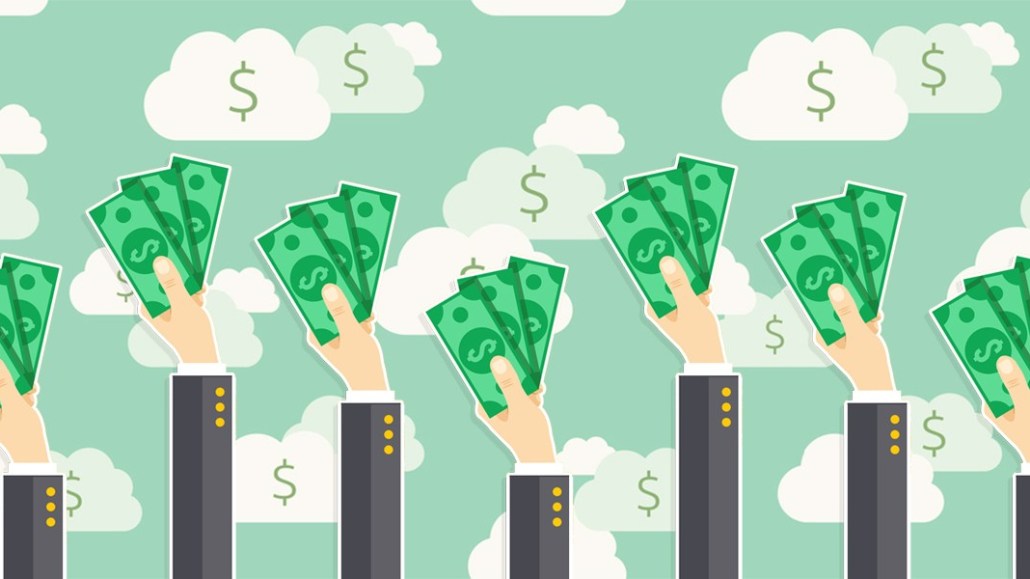Save 50% on a 3-month Digiday+ membership. Ends Dec 5.
Publishers see video ad revenue begin to rebound on Facebook, Snapchat, YouTube

The recovery has started. Maybe.
Since bottoming out in early April, publishers have seen video ad dollars rebound across Facebook, Snapchat and YouTube, according to five publishers interviewed for this article. For most of the publishers, revenue has not recovered entirely as ad prices remain below pre-crisis levels. But the upward trajectory has given publishers hope that “the worst of the storm has passed,” as one publisher put it before adding, “Those are famous last words.”
Even as shelter-at-home orders have eased in some states, publishers have seen viewership remain high as CPMs have ticked up across Facebook, Snapchat and YouTube. Those factors, combined with publishers posting more videos and longer videos that can carry more ads, has helped to reverse the revenue slide for publishers.
“RPMs and CPMs are on a steady trajectory up, and we’re starting to see them on most platforms back to where they were in early March,” said a second publisher, referring to the revenue received for every thousand views and the price per thousand ad impressions.
Publishers saw their platform video ad revenues begin to decline in mid-March after many advertisers stopped buying digital video ads or dialed back their budgets in light of the coronavirus outbreak.That pushed platform video ad prices down by at least 20% for many publishers in April, and it pushed publishers to increase their video volumes and lengths to boost views and watch time in order to counterbalance the decreased ad prices. As a result, publishers were able to lessen the revenue drop-off. That put them in position to recover more quickly as ad dollars returned to the market and the increased demand pushed up ad prices.
Four of the publishers said the recovery has been strongest on Facebook and Snapchat, though all said that YouTube has rebounded, albeit at a slower rate for some.
On Facebook, publishers saw video ad CPMs fall by roughly 20% in April compared to March. “They almost went down by 50% between February and April,” said a third publisher. This publisher said that CPMs increased by 28% in May but are still 20% short of the February mark.
Ad position: web_incontent_pos1
One publisher saw Facebook video ad CPMs bottom out at $7 in early April and pick back up to $10, which is near the $10+ range this publisher had seen the week of March 9. A fourth publisher said that Facebook video ad CPMs hovered around $8 by the end of May, compared to averaging $9 CPM prior to the crisis.
On Snapchat, the recovery has been even more notable. Two of the publishers said their revenue per thousand unique views fell to $1.50 in late March and early April and is now around $3, which is near their pre-crisis highs of $3 to $4 RPM.
Although some publishers said that YouTube has picked up at a slower pace than Facebook and Snapchat, a fifth publisher said the rate of recovery has been roughly the same across all three platforms. This publisher typically generates $17 to $18 million a month on YouTube. In April, the publisher’s YouTube revenue fell to roughly $10 million and then rose to $14 million in May. The first publisher said that CPMs for ads sold in YouTube’s auction had fallen from $25 in March to $20 in April and are now around $23. “YouTube is stabilizing,” this publisher said.
While the publishers were glad to see revenue headed in a positive direction, some lamented the money they could have been making with the viewership they have experienced since March. “The problem is consumption went up and revenue declined,” said the fifth publisher.
Now, with revenue trending up, publishers are worried about viewership dropping off. The publishers have yet to see that, but with school years wrapping up and states reopening, they are unsure whether people will continue to spend as much time watching videos. Their hope is that an increase in ad dollars will offset a potential decline in viewership. “Political [advertising] is starting, and that’s a really good thing because there’s a lot of money in political,” said the fifth publisher.
More in Future of TV

Future of TV Briefing: The streaming ad upfront trends, programmatic priorities revealed in Q3 2025 earnings reports
This week’s Future of TV Briefing looks at what TV and streaming companies’ latest quarterly earnings report indicate about the state of the streaming ad market.

Future of TV Briefing: The creator economy needs a new currency for brand deals
This week’s Future of TV Briefing looks at why paying creators based on reach misses the mark and what IAB is doing to clear up the creator-brand currency situation.

Future of TV Briefing: WTF is IAB Tech Lab’s device attestation tactic to combat CTV ad fraud?
This week’s Future of TV Briefing breaks down the CTV ad industry’s new tool for fighting device spoofing.
Ad position: web_bfu

